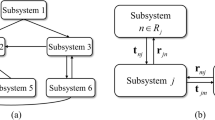Abstract
China fusion engineering test reactor (CFETR) is a magnetic confinement device which will fill the gap between the fusion experimental reactor and the demonstration reactor. To efficiently conduct neutronics modeling for the multiple identical and similar structures present in CFETR’s modular design, an improved one-to-many method is developed and implemented in this study. This method involves using a basic model in conjunction with a 3D transformed coordinate system. However, the absence of a clear solution method for the transformed coordinate system in MCNP presents a challenge. To address this issue, a solution method based on the axis attributes of the surfaces in MCNP and the composite nature of the 3D transformed coordinate system is developed. The improved one-to-many method has been applied to the neutron modeling of CFETR, and its reliability has been verified. In the neutron calculation model corresponding to the one-to-many and one-to-one methods, relative differences of the total TBR and nuclear heating are 0.25%, 0.07% respectively. The contribution of blanket modules to tritium breeding ratio (TBR) and nuclear heating has a relative difference within the range of − 0.25–0.55%. The relative differences of neutron flux and nuclear heating distribution for individual blanket modules #3–1 and #6–1 are within the range of − 0.60–0.40%. The results indicate that the improved one-to-many method can be employed for neutronics modeling in the preliminary design of CFETR.















Similar content being viewed by others
Availability of Data and Materials
The data and materials used in this research are available upon request from the corresponding author.
References
J. Wang, Q. Wang, M. Ding, Review on neutronics/thermal-hydraulic coupling simulation methods for nuclear reactor analysis. Ann. Nucl. Energy 137, 107165 (2020)
Y. Wan, J. Li, Y. Liu et al., Overview of the present progress and activities on the CFETR. Nucl. Fusion 57(10), 102009 (2017)
P. Lu, Q. Wu, H. Du et al., Progress on neutronic analysis for CFETR. Nucl. Fusion 62(5), 056011 (2022)
F. Moro, U. Fischer, L. Lu et al. Applications of McCad for the automatic generation of MCNP 3D models in fusion neutronics, in 2013 IEEE 25th Symposium on Fusion Engineering (SOFE). IEEE (2013) p. 1–5
X.P. Liu, Y.T. Luo, L.L. Tong et al., Development and application of MCNP auto-modeling tool: MCAM 3.0. Fusion Eng Design 75, 1275–1279 (2005)
H. Du, Y.T. Luo, C. Han et al., Development of an assistant program for CAD-to-cosRMC modelling. Fusion Eng. Des. 157, 111662 (2020)
H.R. Nasif, F. Masuda, H. Morota et al., Development of CAD-MCNP interface program GEOMIT and its applicability for ITER neutronics design calculations. Nucl. Technol. 180(1), 89–102 (2012)
Q. Cao, X. Wang, M. Yin et al., Preliminary activation analysis and radioactive waste classification for CFETR. Fusion Eng. Des. 172, 112789 (2021)
Q. Cao, X. Wang, X. Wu et al., Neutronics and shielding design of CFETR HCCB blanket. Fusion Eng. Des. 172, 112918 (2021)
J.K. Shultis, R.E. Faw, An MCNP Primer (Department of Mechanical and Nuclear Engineering, Kansas State University, Manhattan, 2011)
D. Vranic, D. Saupe. 3D shape descriptor based on 3D Fourier transform, in EURASIP (2001) p. 271–274
Z. Li, K. Feng, Z. Zhao et al., Neutronics study on HCCB blanket for CFETR. Fusion Eng. Des. 124, 1273–1276 (2017)
S. Qu, Q. Cao, X. Duan et al., Neutronics effects of homogeneous model on solid breeder blanket of CFETR. Fusion Eng. Des. 160, 111825 (2020)
S. Qu, Q. Cao, X. Duan et al., Study on multiphysics coupling and automatic neutronic optimization for solid tritium breeding blanket of fusion reactor. Energies 14(17), 5442 (2021)
Funding
This work was supported by the National Natural Science Foundation of China with Grant numbers 11905046 and 12205077.
Author information
Authors and Affiliations
Contributions
Miao Yin wrote the main manuscript,other authors gave guidance recommendations. All authors reviewed the manuscript.
Corresponding author
Ethics declarations
Conflict of interest
The authors declare no competing interests.
Ethical Approval
Not applicable.
Additional information
Publisher's Note
Springer Nature remains neutral with regard to jurisdictional claims in published maps and institutional affiliations.
Rights and permissions
Springer Nature or its licensor (e.g. a society or other partner) holds exclusive rights to this article under a publishing agreement with the author(s) or other rightsholder(s); author self-archiving of the accepted manuscript version of this article is solely governed by the terms of such publishing agreement and applicable law.
About this article
Cite this article
Yin, M., Cao, Q., Wang, X. et al. Application and Validation of an Improved One-to-Many Method to CFETR Neutronics Modeling. J Fusion Energ 43, 4 (2024). https://doi.org/10.1007/s10894-024-00397-9
Accepted:
Published:
DOI: https://doi.org/10.1007/s10894-024-00397-9




